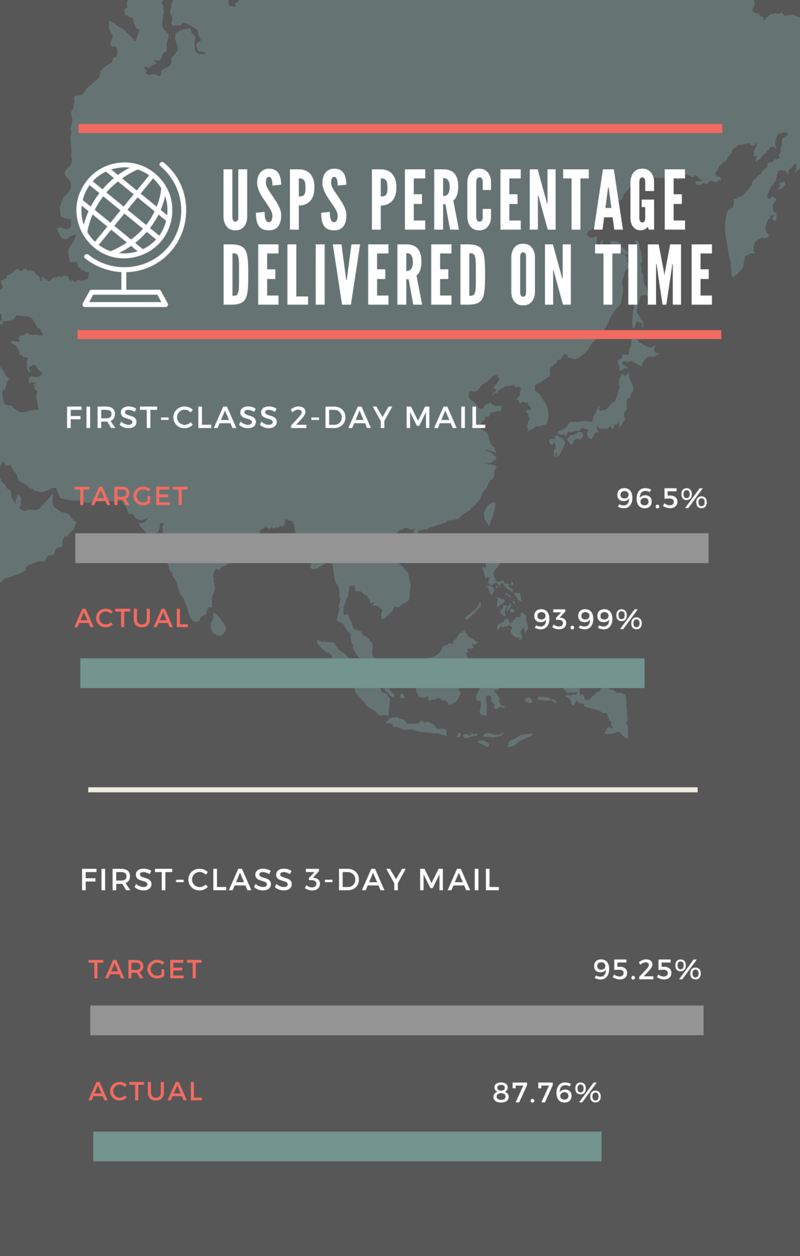
Image by: AndreyPopov, ©2016 Getty Images
I recently attended a US Postal Service (USPS) Northeast Area Mailing Industry meeting where they shared some statistics on how well the Postal Service has performed lately.
While the results are dramatically better than last year, the USPS is still not achieving its stated delivery goals for First-Class Mail delivery.

So, I have to ask: Is this good enough? What is the cost to your business to have a statement, invoice, check, or notice delayed by even just one extra day?
The USPS is faced with the unenviable position that most businesses could not survive: increasing costs to support an expanding US population (at one point, two million new delivery points were being added every year) and rapidly declining revenues due to decreased mail volumes. To make matters worse, governmental price controls and interventionist legislators all affect the profitability and future of mail delivery.
Overall, the USPS does a great job, but does it meet the needs of businesses in 2016 and beyond? The Postal Service’s cost-cutting efforts have certainly impacted delivery times. Despite the relaxation of delivery standards, and the reduction in the range of 1-day mail, it is still challenged to meet its own targets.
As an example of poor delivery, I recently received a First-Class letter from a business in Illinois, which took eight days to reach me in Connecticut. That shouldn’t happen. Two days, sure; three, ok, but eight, no way is that acceptable. The delays in mail delivery can have an impact on cash flow, customer satisfaction, and increased company expenses, such as higher call center volume. In this case, I had to call the call center to inquire about information contained in the letter—a waste of my time and the company’s resources.
Mitigate the impact of delays in postal mail delivery
One way businesses can mitigate the impact of postal delivery delays is to accelerate the transition from paper to electronic delivery. For those of us who attended the DOCUMENT Strategy Forum conference in Chicago, we repeatedly heard the message of looking at customer communications from the perspective of the customer and the shift to omni-channel delivery.
If businesses want to move customers from paper to e-delivery, they must execute a strategy that delivers value to the customer. It means delivering documents in customer-friendly ways and through the delivery channels they want—web, email, mobile, text, and social media. Customers, especially consumers, want to be able to retrieve their information and take action, when and where they want, at their own convenience.
Remember, it is all about the customer experience and meeting customer expectations. If the USPS makes it harder for businesses to achieve the best customer experience, then it’s just one more reason for companies to accelerate the shift away from paper.
Richard Rosen is the chief executive officer of The RH Rosen Group. The RH Rosen Group works with clients to reduce costs and improve cash flow through paper reduction and process improvements. Contact him at RichR@RHRosenGroup.com.




















